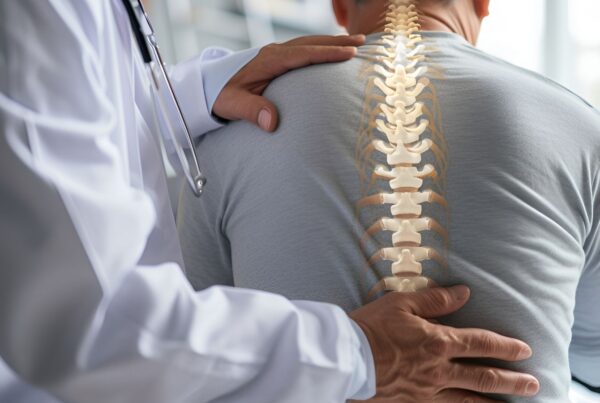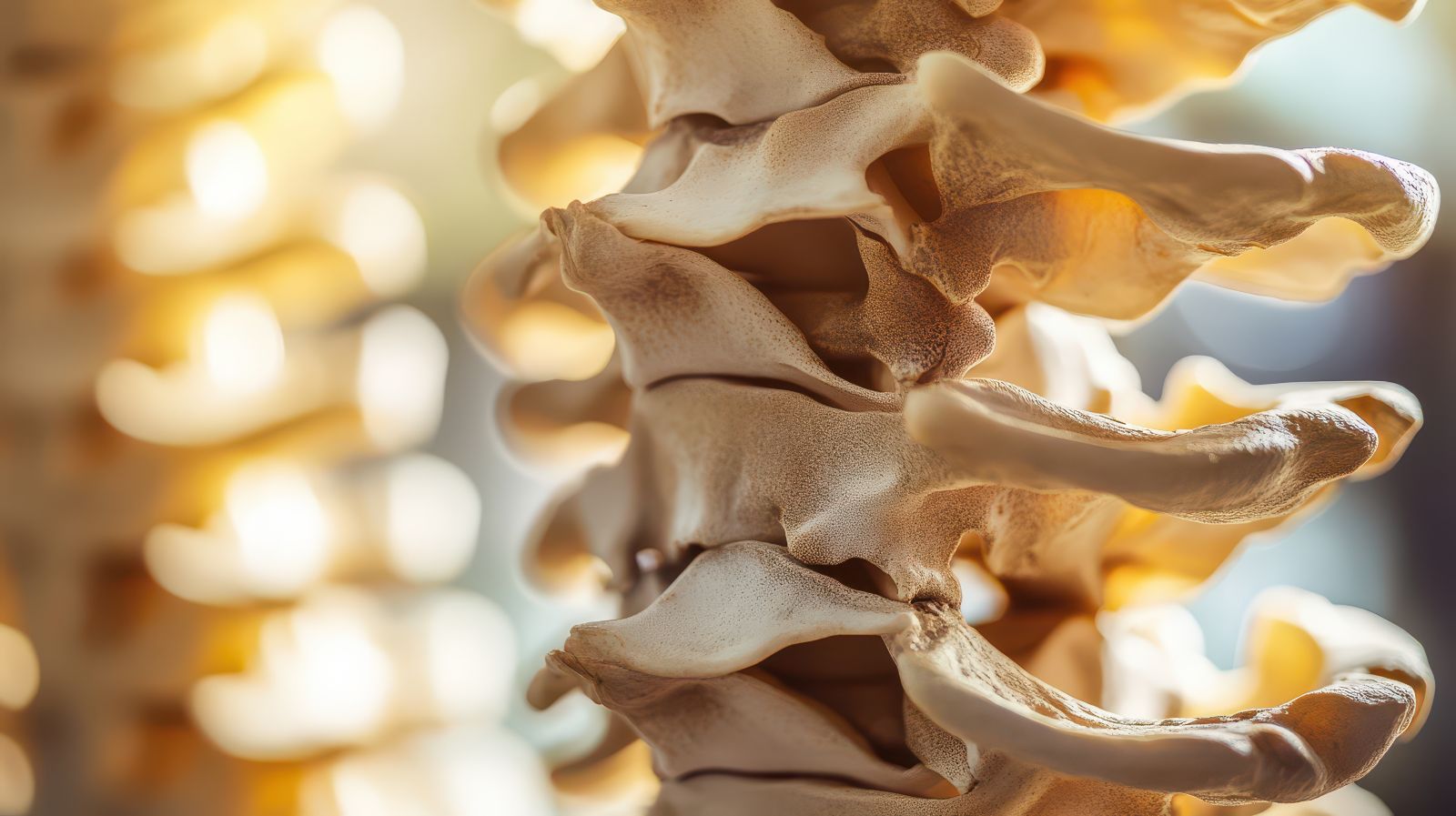Spinal fusion is a common intervention designed to alleviate chronic back pain and stabilize the spine. By fusing two or more vertebrae together, this surgery aims to reduce pain and restore quality of life for people who are dealing with debilitating spinal conditions.
If you are dealing with spinal issues and considering undergoing fusion, you undoubtedly have many questions. One of those questions is certainly, “What percentage of spinal fusions are successful?” Here’s everything you need to know about spinal fusion surgery success rates so you can make an informed decision.
What Is Spinal Fusion?
Spinal fusion is a surgical intervention that connects two or more of your spinal vertebrae. A surgeon will perform the fusion with bone grafts, screws, or cages. The primary objective of the surgery is to eliminate painful motion between vertebrae, thereby providing stability and reducing discomfort.
Spinal fusion may be recommended if you are experiencing a condition that compromises spinal stability or causes chronic pain. Common conditions include:
- Degenerative Disc Disease: Wearing of spinal discs that leads to pain and instability
- Spinal Instability: Abnormal movement or alignment of the vertebrae that is often caused by trauma or conditions like spondylolisthesis.
- Scoliosis: Abnormal curvature of the spine that can cause pain or functional issues
- Herniated Discs: In cases where disc removal is necessary, fusion may stabilize the spine
- Spinal Stenosis: Narrowing of the spinal canal, which can lead to nerve compressions and pain
How are these procedures performed? Minimally invasive procedures can be used to perform spinal fusion. This range of technology and techniques allows surgeons to perform your surgery with smaller incisions, which can lead to faster recovery times.
Do you have questions? Schedule a consultation with Neurosurgeons of New Jersey to get all of your questions answered.
Success Rates of Spinal Fusion Surgery
What counts as “success” when performing spinal fusion surgery? Success can be tough to measure, which means the data about success rates may vary, depending on what criteria you use.
Some common measures of success include reduced pain, improvement of function, and stabilization of the spine. It’s important to understand your odds of success so you can set realistic expectations and make informed decisions.
How successful are lumbar fusion surgery and spinal fusion? Here’s a broad overview of typical lumbar disc fusion success rates and factors you need to be aware of.
General Success Rates
The success rate for spinal fusion typically ranges from approximately 70% to 90%. This figure varies depending on the underlying condition and the surgical technique the doctor uses.
Your ability to adhere to post-operative care will also have a critical impact on your success. If you complete all of your physical therapy and follow the doctor’s recommendations to the letter, you increase your odds of a successful surgery.
Individuals who enjoy a successful spinal fusion typically report benefits such as significant pain relief and improved functionality.
Conditions like degenerative disc disease tend to have higher success rates compared to complex conditions like scoliosis or severe spinal instability. In those cases, outcomes can vary based on the severity of the condition.
Factors Influencing Success
The spine is incredibly complex, and every patient is unique. It’s important to understand that several different factors can impact whether your surgery is successful or not. Those factors include:
- Age and Overall Health: Younger, healthier patients often experience better outcomes due to faster healing and a lower risk of complications
- Specific Spinal Condition: Your condition will have the biggest influence on the outcome of the procedure
- Surgical Technique and Experience: Choosing an expert surgeon who uses minimally invasive techniques can give you better odds of success
- Adherence to Post-Operative Rehabilitation: Following post-surgical guidelines, including physical therapy, improves your recovery process
You need to partner with an expert surgeon who will thoroughly examine you and review your health history prior to creating a surgical plan. A personalized approach tailored to your condition and goals will yield the best odds of success.
A great doctor will also help you set realistic expectations and reiterate the importance of completing all post-operative care, including making lifestyle changes and completing therapy.
Think of spinal fusion surgery as a collaborative effort between you and your surgeon. If both of you do your part, you have an opportunity to reduce back pain and restore your quality of life.
It's time to get back
to doing what you love.
Risks and Complications
While spinal fusion surgery has high success rates, it’s important to be aware of potential risks and complications. The most common spinal fusion risks and complications include the following.
Infection
As with any surgery, there’s a risk of infection at the surgical site. It’s vital to complete any pre-surgery cleaning routine as outlined by your provider. This may include washing thoroughly with an antiseptic skin cleanser.
Post-surgical hygiene is equally important. Make sure you follow your doctor’s instructions regarding hygiene so you can minimize your risk of infection. An infection at the surgical site could cause a delayed recovery and serious adverse consequences.
Hardware Failure
A spinal fusion procedure typically involves the use of bone grafts, screws, plates, or rods. These components can break or loosen over time. If this occurs, your surgeon may have to perform a secondary procedure to replace the damaged parts.
Replacing broken hardware can involve a similar recovery time as your original surgery. If the hardware causes additional damage, the surgical procedure may be more invasive, which means a longer and more intensive recovery process.
Do your part to minimize the risk of hardware failure by making recommended lifestyle changes and avoiding overstraining the fused joint.
Adjacent Segment Disease
Adjacent segment disease is a condition that can occur after spinal fusion. Fusion alters the mechanics of your spine, which can increase the stress on the segments or discs above and below the fused area. This may lead to degeneration in adjacent spinal levels.
Talk to your surgeon about adjacent segment disease and if you are at risk. If other areas of your spine are also damaged, you may be at an increased risk of adjacent segment disease. However, there are steps you can take to mitigate these risks and keep your spine healthy.
Non-Union
Non-union occurs when your vertebrae fail to fuse properly. When this happens, you will experience spinal instability and persistent pain. Poor bone health and smoking are among the factors that can increase the risk of non-union.
Make sure you discuss all of these risks with your surgeon so that you know how they apply to your procedure.
Choosing the Right Surgeon
The surgeon you choose is one of the most critical factors influencing the success of your spinal fusion surgery.
Expertise, experience, and communication skills are essential qualities to look for when selecting a provider. Find a board-certified neurosurgeon or orthopedic spine surgeon with extensive experience in spinal fusion surgeries so you know you are in capable hands.
Before committing to surgery, it’s wise to seek a second opinion. A consultation with another expert can provide clarity and confidence. They may also be able to recommend alternative options that could be a better fit for your condition.
An experienced surgeon at Neurosurgeons of New Jersey can help you weigh the risks and benefits while also discussing the potential lumbar fusion surgery success rate for patients facing similar circumstances as you.
In many cases, we can provide a same-day telehealth consultation, making it easier to connect with experienced specialists. Contact us today, and let’s discuss whether spinal fusion is right for you.

About Livingston
Our team of board certified physicians, located in Livingston, New Jersey, are dedicated to bringing you the latest developments and treatment options for spinal surgery. We strive to produce the most clarified & clear content to help you make informed decisions on your medical journey. The road to feeling like your true self should not feel lonely- Let us help you. Please call us to schedule a consultation and speak to one of our team members.
Recent Posts:






